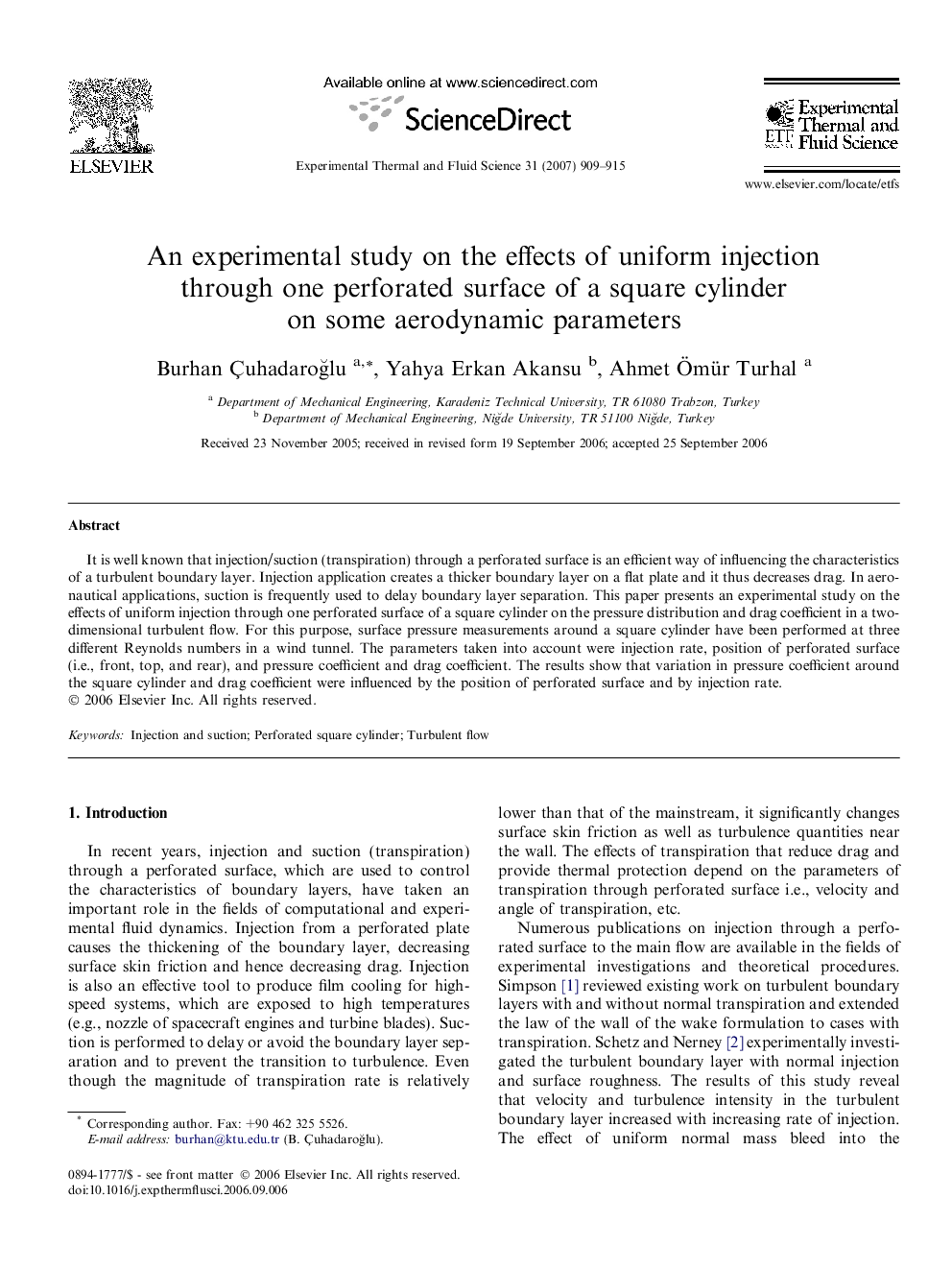| Article ID | Journal | Published Year | Pages | File Type |
|---|---|---|---|---|
| 652719 | Experimental Thermal and Fluid Science | 2007 | 7 Pages |
It is well known that injection/suction (transpiration) through a perforated surface is an efficient way of influencing the characteristics of a turbulent boundary layer. Injection application creates a thicker boundary layer on a flat plate and it thus decreases drag. In aeronautical applications, suction is frequently used to delay boundary layer separation. This paper presents an experimental study on the effects of uniform injection through one perforated surface of a square cylinder on the pressure distribution and drag coefficient in a two-dimensional turbulent flow. For this purpose, surface pressure measurements around a square cylinder have been performed at three different Reynolds numbers in a wind tunnel. The parameters taken into account were injection rate, position of perforated surface (i.e., front, top, and rear), and pressure coefficient and drag coefficient. The results show that variation in pressure coefficient around the square cylinder and drag coefficient were influenced by the position of perforated surface and by injection rate.
